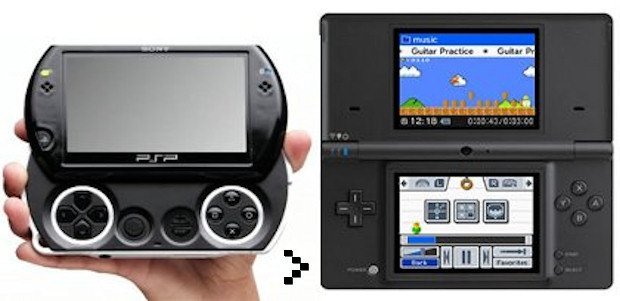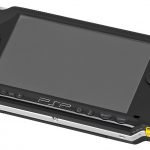Content Table:
Smaller is Better: How the PSP Defied the Odds
When Sony first unveiled the PlayStation Portable (PSP), it immediately captured the attention of gamers worldwide. It promised to revolutionize portable gaming, pushing it to new heights in terms of both gameplay and graphics. Yet, despite its sleek design and impressive capabilities, the PSP faced a major challenge: handheld gaming had long been overshadowed by full-sized consoles. In the gaming world, handheld systems had often been viewed as secondary to their more powerful, stationary counterparts.
However, despite these obstacles, the PSP not only survived—it thrived. Sony’s handheld console proved that “smaller” could indeed be “better,” carving out its own place in a competitive market dominated by home gaming systems.
The Unmatched Graphics and Design of the PSP
What set the PSP apart from the very beginning was its unparalleled graphics among handheld systems. The PSP was designed to deliver a 3D gaming experience, much like its predecessors in the PlayStation line. This was a major leap forward for handheld devices, which had previously struggled to offer the same level of immersive graphics as their larger console counterparts.
At the same time that the PSP was released, Nintendo launched its own handheld console. While Nintendo had traditionally dominated the handheld gaming market with devices like the Game Boy, the PSP’s sleek design and sophisticated hardware made it a serious contender. From the outset, the PSP looked fantastic, featuring a wide screen format that was perfect for first-person and over-the-shoulder perspective games. The device’s stunning visuals quickly earned it a reputation as the handheld system that every gamer wanted.
A Leap Above the Competition
In addition to its striking appearance, the PSP boasted advanced graphic technology that set it far above any other handheld competitor at the time. The wide screen format not only made games more visually appealing, but it also enhanced the overall gaming experience by providing more immersive visuals. Players could enjoy detailed environments, smooth animations, and fluid gameplay—something unheard of in previous handheld systems.
The graphics weren’t the only reason the PSP soared to the top of the handheld market. Sony made sure the system was packed with features that appealed to a wide audience. The decision to make the PSP capable of playing music, videos, and DVDs was a game-changer. This feature broadened the PSP’s appeal beyond just gaming, making it an all-in-one entertainment device. With the ability to watch movies, listen to music, and play high-quality games, the PSP became a must-have gadget for tech enthusiasts, not just gamers.
Changing the Handheld Game
Before the PSP, handheld gaming had always been seen as a lesser alternative to home consoles. Gamers appreciated the portability, but the games themselves were often smaller in scale and more limited in scope. Sony shattered this perception by creating a handheld system with full-sized gaming experiences. No longer were handheld games relegated to simpler or smaller titles—now, handheld gamers could experience the same depth, complexity, and high-quality graphics that were traditionally reserved for home consoles.
One of the PSP’s greatest strengths was its ability to offer games that no other handheld system could. The device’s power and advanced graphics engine allowed for the development of games that pushed the boundaries of what portable gaming could be. Whether it was detailed RPGs, fast-paced shooters, or racing games, the PSP’s library quickly grew to include a wide variety of titles that attracted a diverse range of gamers.
Expanding the PSP’s Appeal
The PSP wasn’t just a gaming device—it was a multimedia powerhouse. By offering a wide range of entertainment options, including the ability to play movies and music, Sony managed to attract a broader audience. While gamers were naturally drawn to the system’s robust gaming capabilities, other users appreciated the PSP for its versatility as an all-in-one entertainment device. This strategic move helped keep the PSP relevant and competitive, even as other handheld systems struggled to keep up.
The addition of multimedia capabilities also enhanced the PSP’s lifespan. Gamers who were initially attracted to the system for its gaming features found themselves using it for a variety of other purposes. Whether it was watching their favorite films on the go or listening to music during a commute, the PSP became more than just a gaming console—it became an essential part of daily life for many users.
Looking Forward: The Future of the PSP
The PSP’s ability to stay relevant in the face of growing competition is a testament to Sony’s forward-thinking design and innovation. Even as other handheld systems have come and gone, the PSP has continued to hold its ground, thanks to its high-quality games, stunning graphics, and multimedia capabilities.
The future of the PSP looks promising as well. As technology advances, new games are continually being developed that take full advantage of the PSP’s hardware. With the promise of bigger and better games on the horizon, the PSP shows no signs of slowing down. Sony’s handheld console has defied the odds and proven that handheld gaming is here to stay.
Conclusion: How the PSP Redefined Handheld Gaming
In a world where handheld gaming was once seen as inferior to home consoles, the PSP has turned the tables. Sony’s handheld system didn’t just survive—it thrived, offering gamers a powerful and portable gaming experience that redefined the market. With its sleek design, impressive graphics, and multimedia capabilities, the PSP continues to be a beloved system that stands the test of time.
As the PSP continues to evolve, it remains a shining example of how smaller can indeed be better in the gaming world. Whether you’re a casual player or a hardcore gamer, the PSP has something for everyone—and it will continue to shape the future of handheld gaming for years to come.



